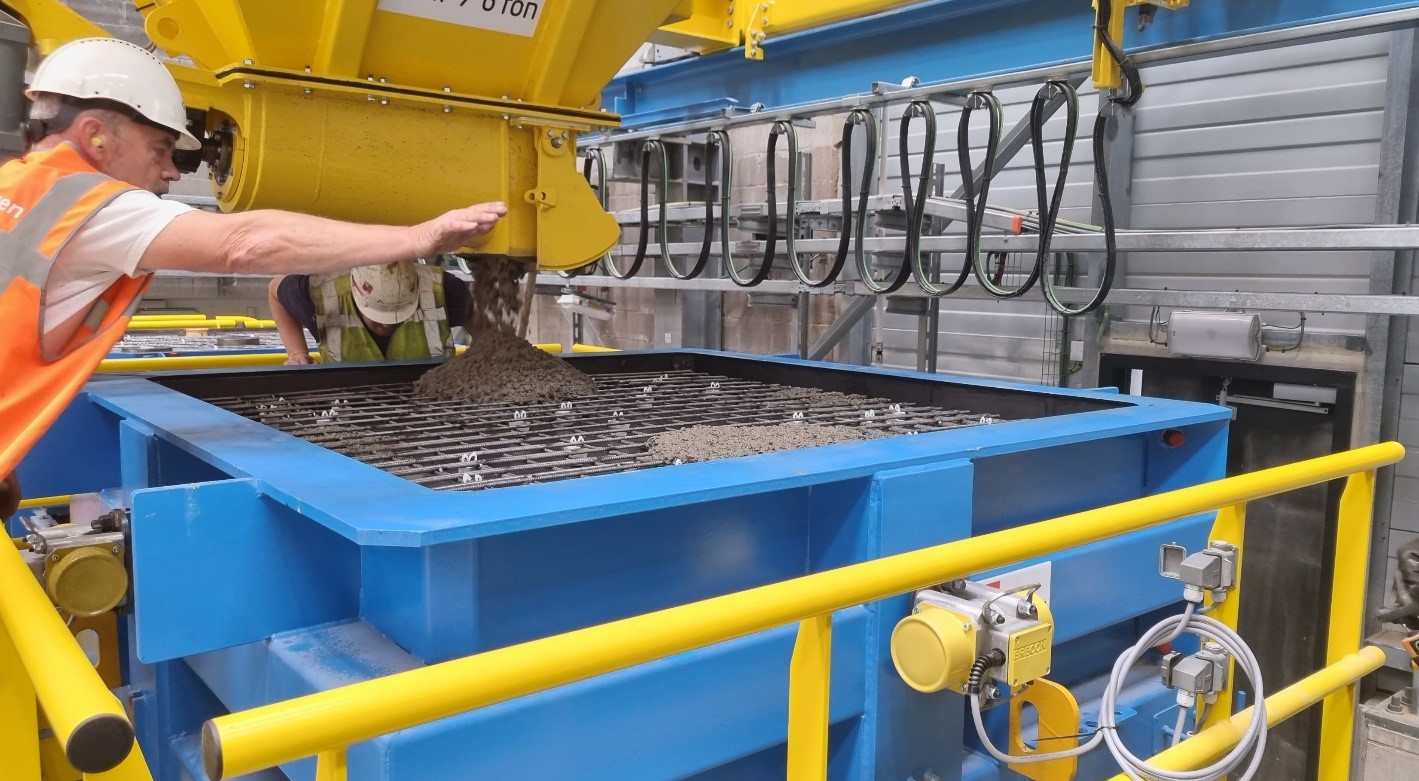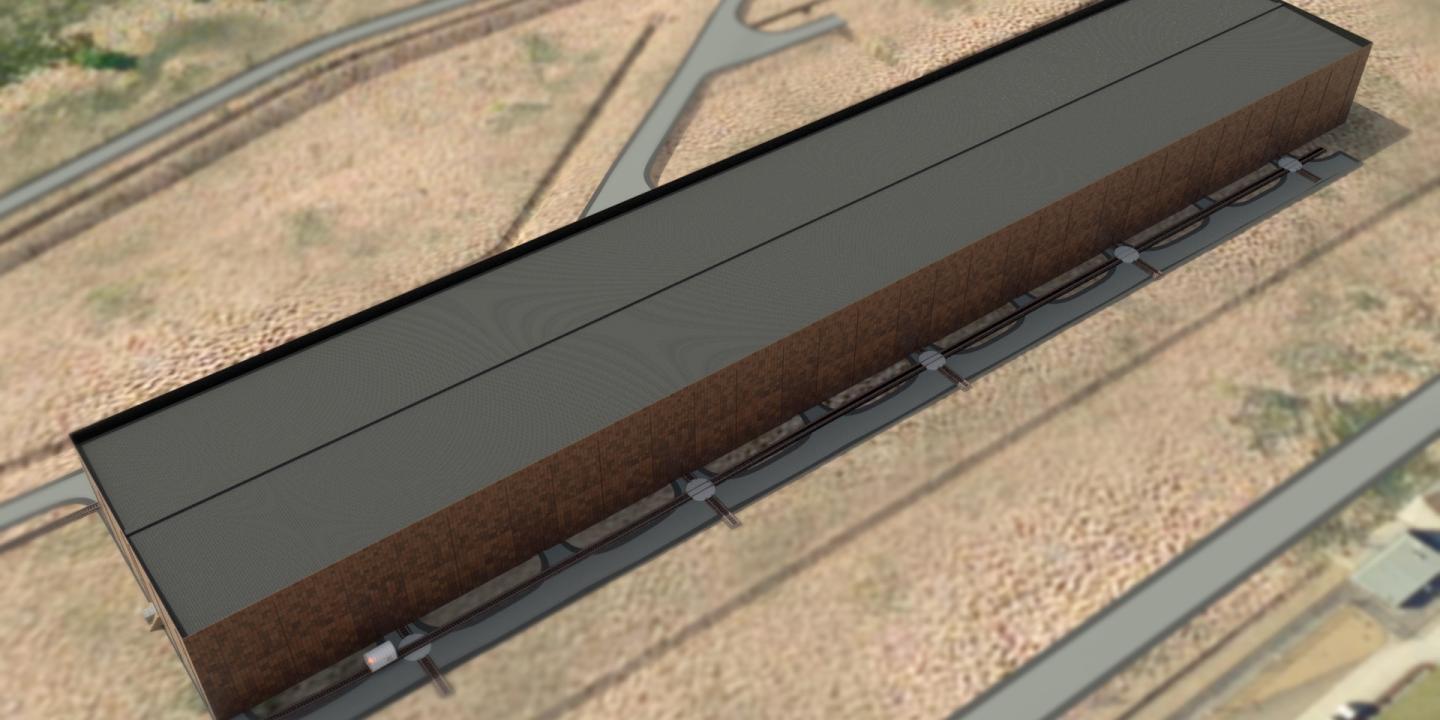ONDRAF/NIRAS has been using the Design of Experiments (DOE) approach for just over five years as part of several projects in its Research, Development and Demonstration (RD&D) programme. This approach consists of a series of experiments carefully organised in advance so as to determine, in a minimum of trials and with maximum precision, the influence of certain variables on a system or process.
Erik Coppens, one of our concrete specialists, illustrates this approach using two practical examples: the experiments carried out as part of the study on the sensitivity of concrete and the study on the sorption of plutonium in concrete.
Erik, what exactly is Design of experiments?

Erik: "Design of experiments (DOE) is a set of mathematical and statistical techniques used to plan an experiment or a series of experiments.
Imagine you had to make a dish with four variables: flour, yeast, water and baking time at 180°C. What's the best combination of these variables? In a preliminary phase, you need to define the independent variables. Our recipe can be reduced to a problem with three independent variables: the proportion of water to flour, the proportion of yeast to flour, and the baking time at 180°C. We then approach the question in a very mathematical way and break it down into several parts:
- which of these three independent variables is important?
- are there synergies between these variables, or do they sometimes work against each other?
- are the effects linear?
- is the model obtained with these effects predictive?
This cascade of questions illustrates the mathematical structure underlying the DOE approach. Researchers answer these questions one by one using a set of experiments determined on the basis of three elements:
- answers to previous questions;
- the conditions under which future experiments can be carried out;
- the statistical tools that will be used to analyse the data.
On the basis of these three elements, mathematics enables us to identify all the experiments that provide the necessary information. Better still, mathematics allows us to know the precision of the answers even before the experiments are carried out."
OFAT or DOE approach?
Erik: "Experiments are often based on the "one variable at a time" approach, also known as OFAT (one factor at a time). This approach involves setting all the variables except one that is varied to determine the effect on the response. However, it requires a great deal of experiments, with no guarantee that all the major effects will have been identified.
In the DOE approach, on the other hand, all possible effects are taken into account when the experiments are determined. With the DOE approach, it is therefore unlikely that significant effects would not be identified. In contrast, by applying the OFAT approach, interactions between variables can easily be overlooked. And yet, interactions tell us whether there are synergies or whether the variables are working against each other. In short, DOE is a powerful approach for collecting and analysing data."
What are some examples of applications in radioactive waste management?
Erik: "The processes we research are obviously more complex than a recipe and often involve many variables. We used the DOE approach to address two complex issues relating to the future surface disposal facility for low- and medium-level short-lived radioactive waste."
The sensitivity of concrete
Erik: "Concrete is widely used in the nuclear industry for conditioning and disposing of radioactive waste since it has a high capacity for sorption, i.e. for fixing radionuclides, reducing their mobility.
We recently studied the sensitivity of one of the concrete compositions that will be used for the surface disposal facility. The objective of this study was to measure how slight alterations in the composition of concrete impact its properties. We have identified nine independent variables that can potentially affect these properties. For instance, this includes factors such as the quantity of gravel or sand utilised in the concrete mixture.
Several types of concrete with variations in composition were identified through DOE and produced on a laboratory scale. All these variations were representative of the spectrum of variations that can be encountered in the industrial production of concrete. The aim was to identify the variations that can have a significant influence on the properties of concrete and those that do not.
Using the DOE approach, we were able to study the impact of these nine variables in just twelve experiments. With the usual OFAT approach, we would probably have carried out up to four times as many experiments, but with less reliable results in the end."

The impact of isosaccharinic acid on the sorption of plutonium in concrete
Erik: "Isosaccharinic acid (ISA) is a byproduct of cellulose degradation and is recognised for its ability to decrease the sorption capacity of plutonium in concrete. However, cellulose is frequently found in radioactive waste. Additionally, it is plausible that other variables could also influence the sorption properties.
Employing the Design of Experiments (DOE) approach, we were able to ascertain the variables, besides ISA, that influence the sorption properties and the degree of their impact, including interactions with ISA. Several variables came into play: the concentration of ISA, the composition of the water in the concrete, the ratio of liquid to solid, the concentration of plutonium and the period of contact between the concrete and the plutonium. In all, there are several hundreds, if not thousands, of conceivable combinations.
The DOE approach enabled us to reduce all the combinations to be tested to a total of 28 experiments."
Read more about this study here.





